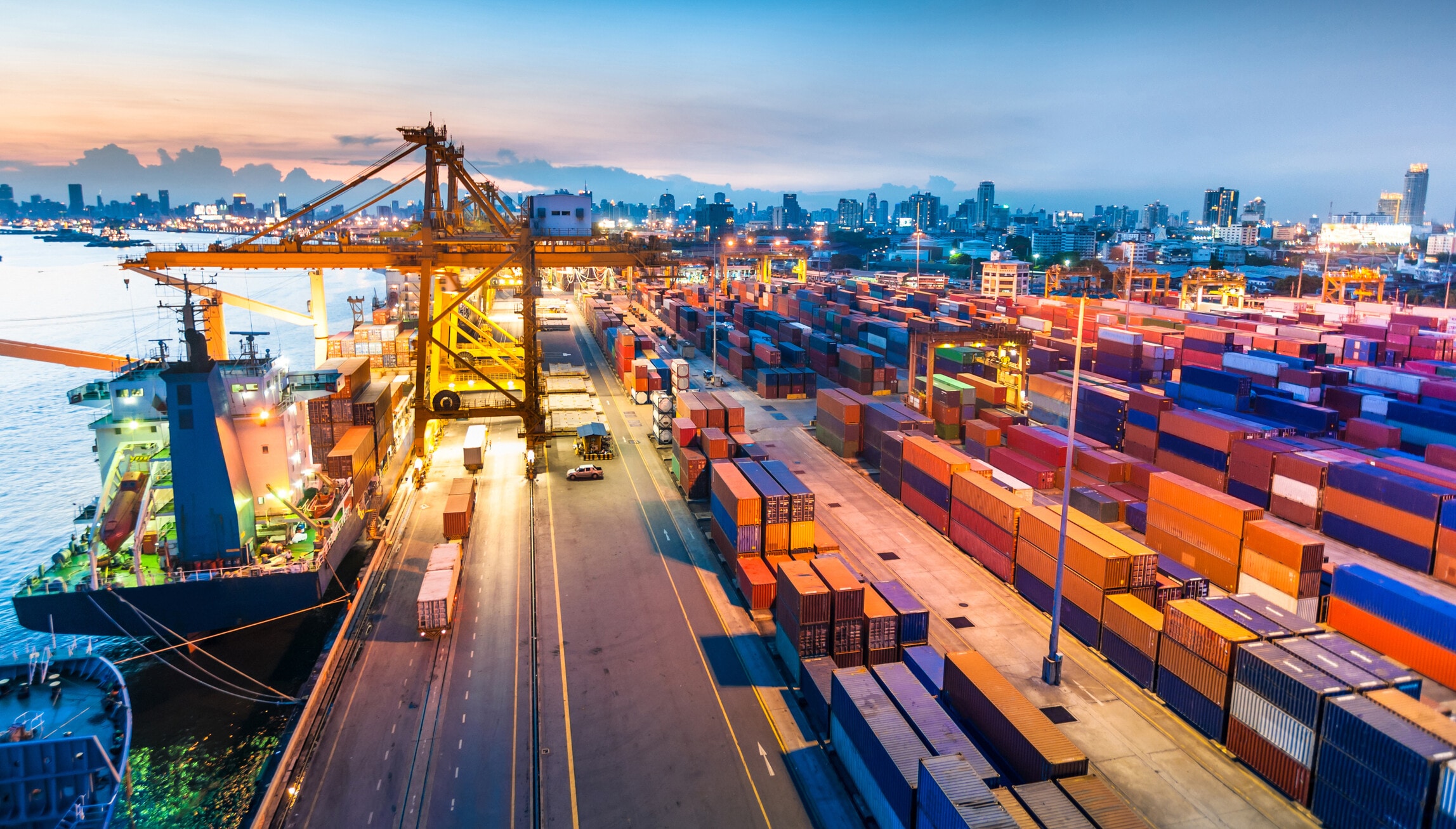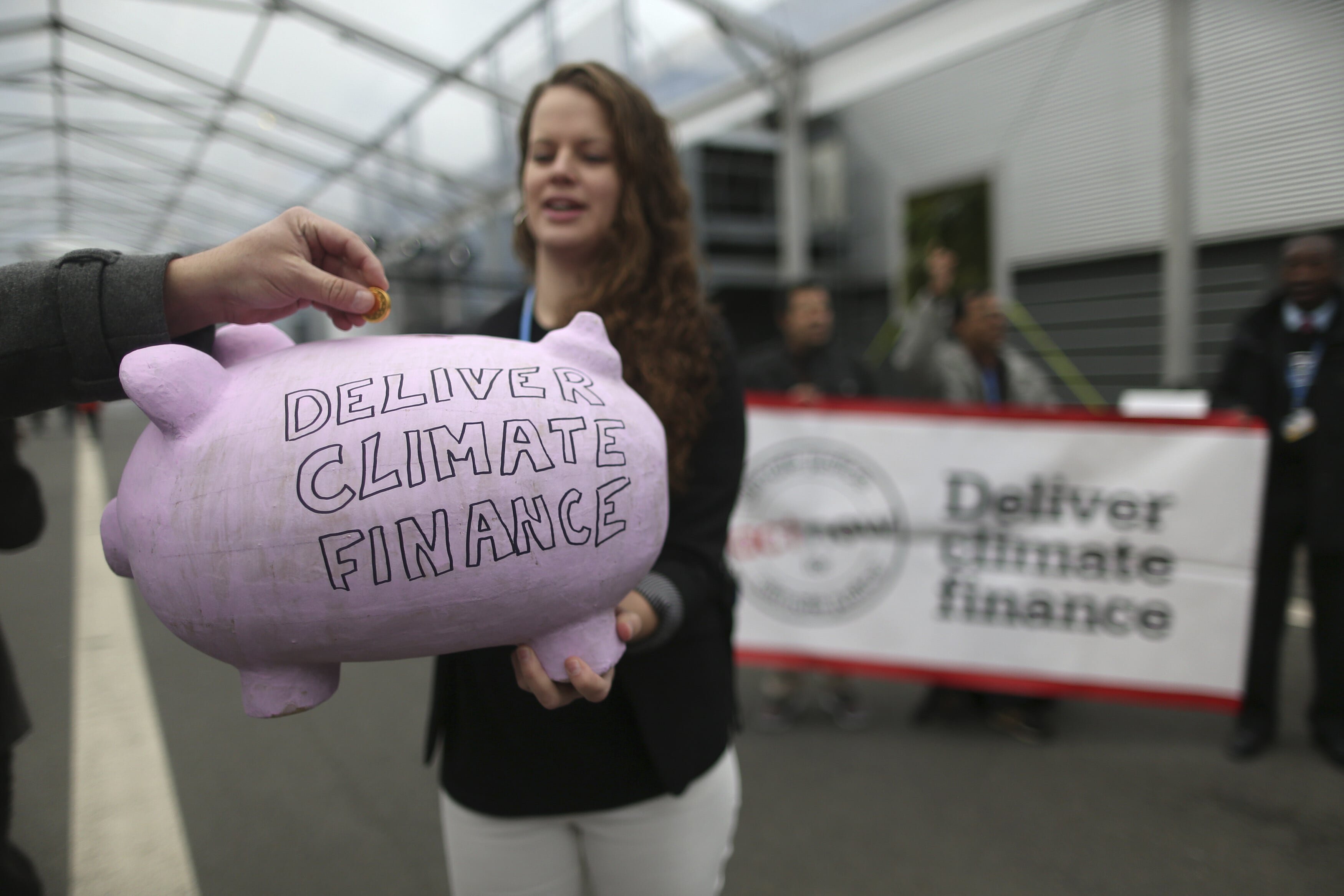Why women’s leadership is key to climate action

Women continue to face barriers to equal participation in environmental decision-making, despite research showing how vital this is to achieve climate targets.
Image: UNSPLASH/Lewis Parsons
Stay up to date:
Climate Crisis
- Due to unequal societal factors, women are underrepresented in all levels of environmental decision-making.
- However, women and girls are crucial in the work to achieve more effective and equitable climate outcomes.
- A 2019 study found that national parliaments with more women pass more stringent climate policies.
- Access to quality education, gender-responsive policy measures, and laws against gender discrimination, will set a pathway to gender parity in climate leadership.
At the COP26 climate summit, the leaders of Estonia, Tanzania and Bangladesh were the first to sign the Glasgow Women’s Leadership statement, calling for countries to support the leadership of women and girls on climate action at all levels of society and politics. Yet these three women comprised nearly a third of all female leaders at the conference, out of 140 heads of delegation.
On Gender Day at the COP, countries including the UK, Canada and the US pledged to further integrate gender into their climate finance arrangements. While the pledges reflect a growing awareness of “gender-responsive” finance, which promotes gender equality, the amount of money so far mobilised falls well short of what is needed around the world. Attention to gender in climate finance negotiations remains negligible. Making the Glasgow Women’s Leadership statement a reality will require scaled-up funding for women’s capacity-building and community-level climate action.
The negative impacts of climate change disproportionately affect women and girls, especially in the global south. This is not due to inherent vulnerability but the result of gender inequalities in the political, social and economic realms that intersect with other axes of social disadvantage, such as race, sexuality, gender identity and disability status. For example, during and after climate-related events, women and girls are more exposed to gender-based violence, and girls are less likely than boys to continue their education. The Malala Fund estimates that in 2021, climate-related events will prevent at least four million girls in developing countries from finishing their education. When it comes to employment, women in developing countries are more likely to work in the informal sector, making their livelihoods more vulnerable to economic and environmental shocks.

Despite these challenges, women and girls have a crucial role in achieving the climate targets set at COP26. As valuable members of society, they deserve to participate equally in public life. Still, it is notable that their participation generates more effective and equitable climate outcomes, from sustainable land management to last-mile solar panel deployment. Research demonstrates that due to socially prescribed gender roles, women assess risk differently to men and typically prioritise the welfare of their families and communities in resource-management decisions. Such differences in decision-making extend to national politics: a 2019 study found that national parliaments with more women pass more stringent climate policies. Measures that improve women’s access to healthcare, education and political representation strengthen their adaptive capacity, enabling their societies to adapt more quickly and easily to the effects of climate change.
Unfortunately, women continue to face barriers to equal participation in environmental decision-making, and women-led community organisations commonly struggle to access climate finance. Support for women’s initiatives and access to resources can drive effective climate action that meets the needs of communities.
Women’s participation in environmental decision-making
While women, especially indigenous women and women in the global south, are leading frontline climate action and activism, they are underrepresented in environmental decision-making at all levels. Gender-differentiated tasks, including women’s responsibility for most unpaid household labour, and unequal power relations within families and communities, can limit women’s opportunities to participate in local environmental governance. The common prerequisite of land tenure for community natural resource decision-making also limits women’s input. UN Women estimates that 64% of women globally do not have equal land rights to men in practice.

At national and international levels, women continue to face glass ceilings that prevent them from reaching environmental leadership positions. Gender parity in national-level environmental decision-making is rare, and employees of environmental ministries are on average one-third women. Although the gender balance of government delegations to climate negotiations has improved, UNFCCC research found that men spoke 74% of the time in plenary meetings between May and June last year.
Gender-responsive policy measures can help to overcome these systemic barriers. Land tenure reform can support women’s land ownership, inheritance and use rights, for example, by mandating that land registration by couples includes both names. Policies like gender quotas can support women’s career progression in environmental institutions. Investment in social services, especially childcare, can lighten the load of unpaid household labour on women, as can flexible working policies and paid parental leave. Creating and enforcing laws and policies against sex and gender discrimination, including gender-based violence, can ensure that climate change spaces are inclusive and safe for all. These measures all contribute to addressing the complex issue of culture change.
Ensuring access to quality education for girls is also a key pathway for gender parity in climate leadership. Girls’ education can be a force for gender equality in families and communities and is closely associated with a country’s female political representation. Climate education for girls, including technical environmental training, can increase their resilience and build their capacity to critically engage with climate information and lead climate solutions. In developed and developing countries alike, girls’ participation in STEM (science, technology, engineering and maths) education on an equal platform with boys can enable them to access traditionally male-dominated “green” jobs and contribute to an equitable just transition.
Of course, women and girls are already leading their own solutions to the interlinked challenges of climate change and gender inequality. To scale these up, they need access to climate finance.
What’s the World Economic Forum doing about climate change?
Women’s access to climate finance
The integration of gender considerations into climate finance is limited. Due to insufficient monitoring, reporting and verification of gender in climate finance, data on the topic are patchy, but Oxfam research shows that only 1.5% of overseas climate-related development assistance identified gender equality as a primary objective and two-thirds of projects and programmes do not consider gender equality in their design, budgeting or implementation. Of this aid, only 0.2% reaches women-led and women’s organisations. Liane Schalatek, associate director of Heinrich Böll Stiftung Washington, DC and co-author of a recent report on the topic, calls this a “shocking indictment”, reflecting a disregard by climate funds and implementing agencies that “women-led, women’s and feminist organisations not only are very aware of the needs and climate impacts… in their communities, but have also women-led contextualised and localised solutions.”
While staff from climate finance institutions express support for funding gender equality organisations, institutional barriers exist, especially for the global south. The small scale of many women’s community organisations can hinder accreditation with, and direct access to, large-scale funders. Due to concerns about budget timelines and transaction costs, institutional funders commonly only offer large funding packages with stringent timelines.

Gender parity and expertise in financial institutions are important for the design of gender-responsive climate finance solutions, as is meaningful consultation with women and girls in beneficiary communities. The gender integration targets present in climate finance institutions like the Green Climate Fund can be taken further by making gender considerations mandatory for funding. Improving data collection and transparency on gender integration in climate finance projects, including on how projects benefit people of different genders, can foster collaboration and knowledge-sharing among funders and beneficiaries.
Small innovations in climate finance mechanisms can transform access to finance for women’s organisations. Direct access channels remove government as middlemen and reduce institutional hoop-jumping for community organisations. Providing smaller funds, more flexible timelines, and capacity-building and institutional support for women-led and women’s organisations applying for climate finance can also support equitable access. More loans than grants are typically available, and gender-responsive finance is weighted towards adaptation rather than mitigation programmes. Improving the balance in these areas can support long-term capacity-building for women’s climate leadership.
At COP26, civil society groups celebrated women’s climate leadership at the Gender Just Climate Solutions Awards – from the Imece initiative training women in Turkey to build solar batteries for refugees, to Todos Juntos supporting indigenous women in Guatemala to establish mealworm farms. These initiatives prove that combined solutions to climate change and gender inequality exist – women leaders, new and emerging, just need more support.
Accept our marketing cookies to access this content.
These cookies are currently disabled in your browser.
Don't miss any update on this topic
Create a free account and access your personalized content collection with our latest publications and analyses.
License and Republishing
World Economic Forum articles may be republished in accordance with the Creative Commons Attribution-NonCommercial-NoDerivatives 4.0 International Public License, and in accordance with our Terms of Use.
The views expressed in this article are those of the author alone and not the World Economic Forum.
Related topics:
Forum Stories newsletter
Bringing you weekly curated insights and analysis on the global issues that matter.
More on Climate ActionSee all
Wee Kean Fong and Yvonne Zhou
July 29, 2025
Pranidhi Sawhney and Adam Skali
July 29, 2025
David Carlin and Sourajit Aiyer
July 28, 2025
Nasim Pour, Sebastien Cross and Joel Gould
July 28, 2025
Michael Wang
July 28, 2025
Naoko Tochibayashi
July 28, 2025





